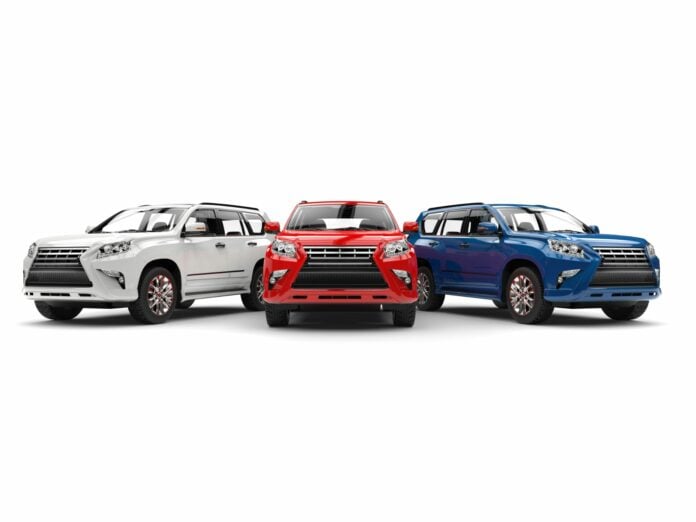The SUV (sports utility vehicle) was once a utilitarian vehicle favored mostly by drivers who needed to haul large items and occasionally tackle semi-rough terrain. Now, it’s arguably the most popular vehicle type as more and more drivers prefer the taller driving position and commanding road view that an SUV provides.
With more of these vehicles coming into the market, you now have terms like crossovers or CUVs (crossover utility vehicles). In the debate of crossover versus SUV, some would argue that the Honda HR-V is not an SUV, but a crossover as it’s built on a regular tarmac-biased passenger car platform, and only a ladder frame vehicle like the Toyota Fortuner can be called an SUV. But does it matter? Since 90 percent of SUVs today are based on passenger cars, we may need to reconsider what an SUV is.

Here’s What Honda Has to Say about Crossovers vs SUVs
To find out the difference between a crossover and an SUV, our friends at WapCar spoke to Yoshitomo Ihashi, Large Project Leader of the 2022-generation Honda HR-V. He said around 10 years ago, the body style of a vehicle closely resembles its category, be it an SUV or a minivan. Now, it’s getting mixed so SUVs started being called crossovers.
He also said that people would start referring to a high-rider vehicle with sporty styling as a crossover. However, Honda and its development team view the Honda HR-V as a compact SUV, as the concept of the vehicle is to provide the value and practicality of a compact SUV.

The key design element of the HR-V is its sloping, coupe-like side profile with hidden rear door handles and a fastback-style low roofline. This, combined with its passenger car-based, front-wheel drive platform would logically put it in the crossover category but that’s not what it’s called by its creators.
In other words, there is no strict definition of a crossover as it doesn’t actually exist in the automotive industry. In fact, you can use it interchangeably with the term SUV to refer to any high ground clearance, urban-biased passenger vehicle.
The Origin of the SUV
To learn what an SUV is, we need to look at when the term SUV was coined in the late ‘80s by marketers at Jeep, the American automaker. Here’s how the term SUV became popular.
1980’s
- Jeep introduced the Jeep Cherokee as an SUV to differentiate it from the rugged 4×4 Jeep Wrangler truck. However, the term didn’t really catch on.
1990’s
- Ford adopted the term for its new Ford Explorer SUV to differentiate it from the off-road-biased Ford Bronco. The Explorer was a success and the term SUV surged in popularity since then.

The Ford Explorer is what made SUVs popular in the 1990’s
Similar to when SUV was coined to differentiate softer, more comfortable trucks from their off-road cousins, the term crossover was created to refer to ever-softer, smaller SUVs.
If you think the usage of the terms crossovers and SUVs is confusing, it turns out that automakers’ marketing teams in different parts of the world are free to use the terms that suit their local market better, just like the examples in this list.

The Honda Passport
| Vehicle | Marketing Terms Used |
| Fifth-Generation Honda CR-V | USA: Crossover
Japan: SUV This generation CR-V was called a crossover in the USA to differentiate it from the more rugged Honda Passport. |
| Sixth-Generation Honda CR-V | USA: SUV
Japan: SUV For the sixth generation 2023 CR-V, Honda USA decided to stick with the SUV category. |
| Mazda CX-5 | USA: Crossover SUV
UK: SUV |
| Toyota Fortuner | Malaysia: SUV
Thailand: PPV (pick-up passenger vehicle) |
| Honda HR-V | USA: Crossover SUV
Malaysia: Compact SUV |
| BMW X-Series | Worldwide: SAV (sports activity vehicle) |
Besides these more “conventional” SUV terms, you also have categories like SUV-coupes for vehicles like the Mercedes-Benz GLC Coupe, and SUV-convertibles for models like the Volkswagen T-Roc Cabriolet.

Volkswagen T-Roc Cabriolet
Do They Matter Anymore?
Buyers used to shop for cars according to segments but that’s no longer the case. And manufacturers have also largely stopped marketing their products according to segments, especially in the SUV and Crossover category.
The easiest example for this is the Honda HR-V and Toyota Corolla Cross. The HR-V is built on the same B-segment platform as the Honda City and City Hatchback, yet many SUV buyers in Malaysia compare it with the Corolla Cross, which is built on Toyota’s C-segment platform. Buyers these days look at whether a vehicle can fit their lifestyle, its features, and its price. Ultimately, vehicle categories are largely just marketing terms and it’s up to you to decide what you want.
This article was originally published on wapcar.my and has been adapted by CARSOME.
